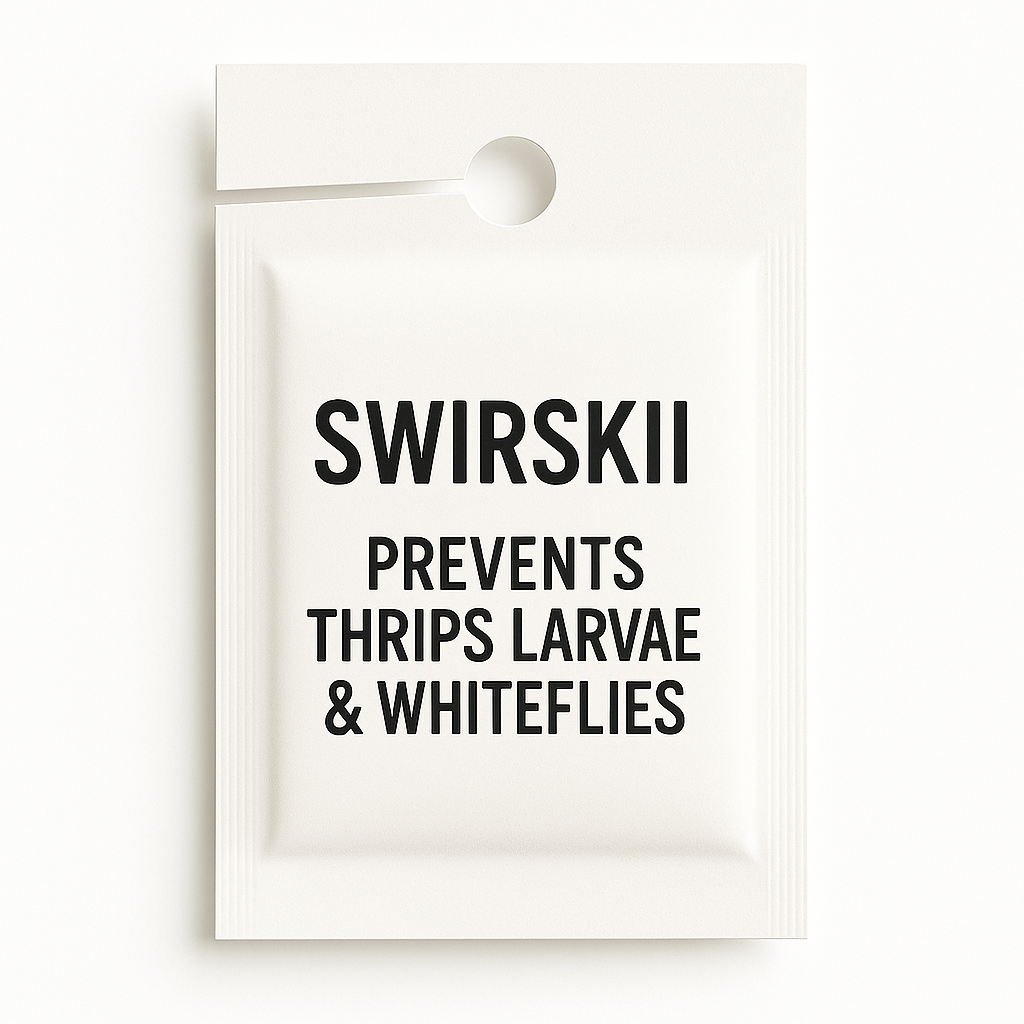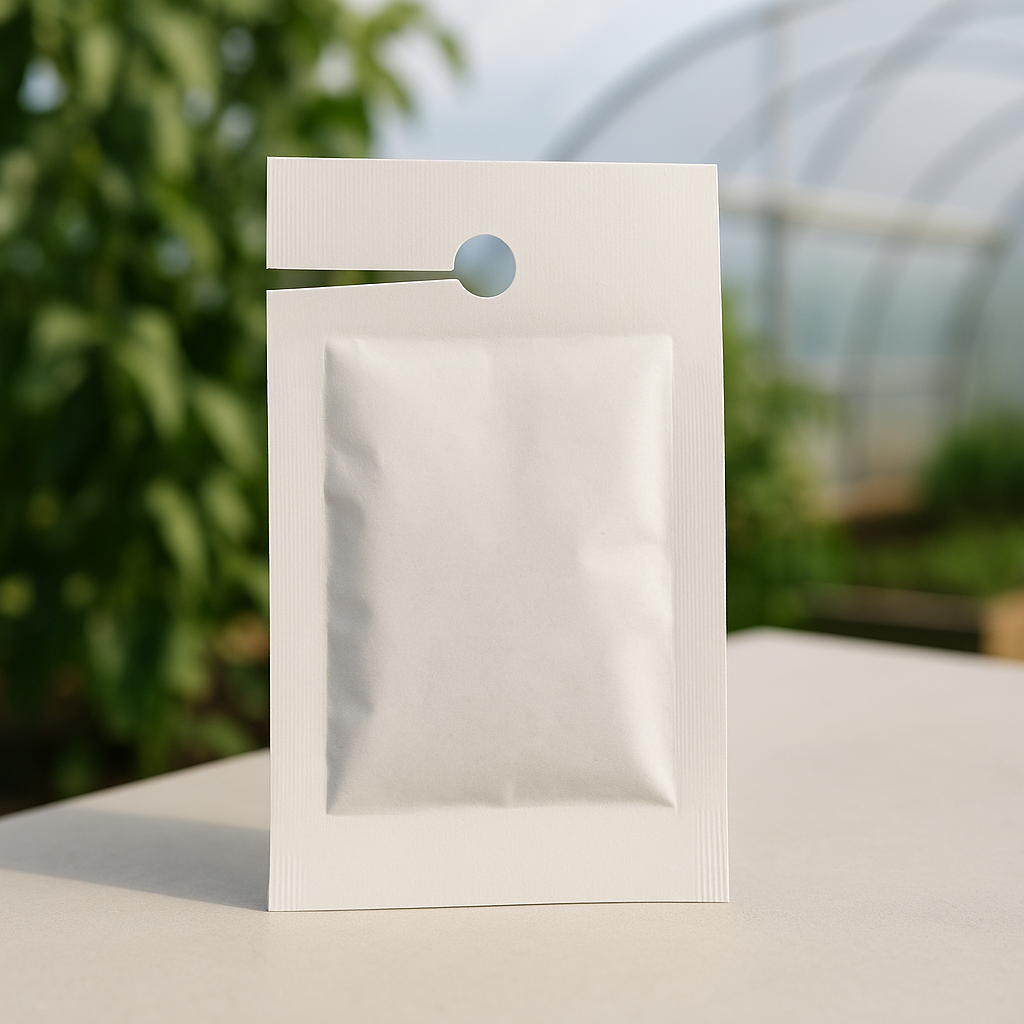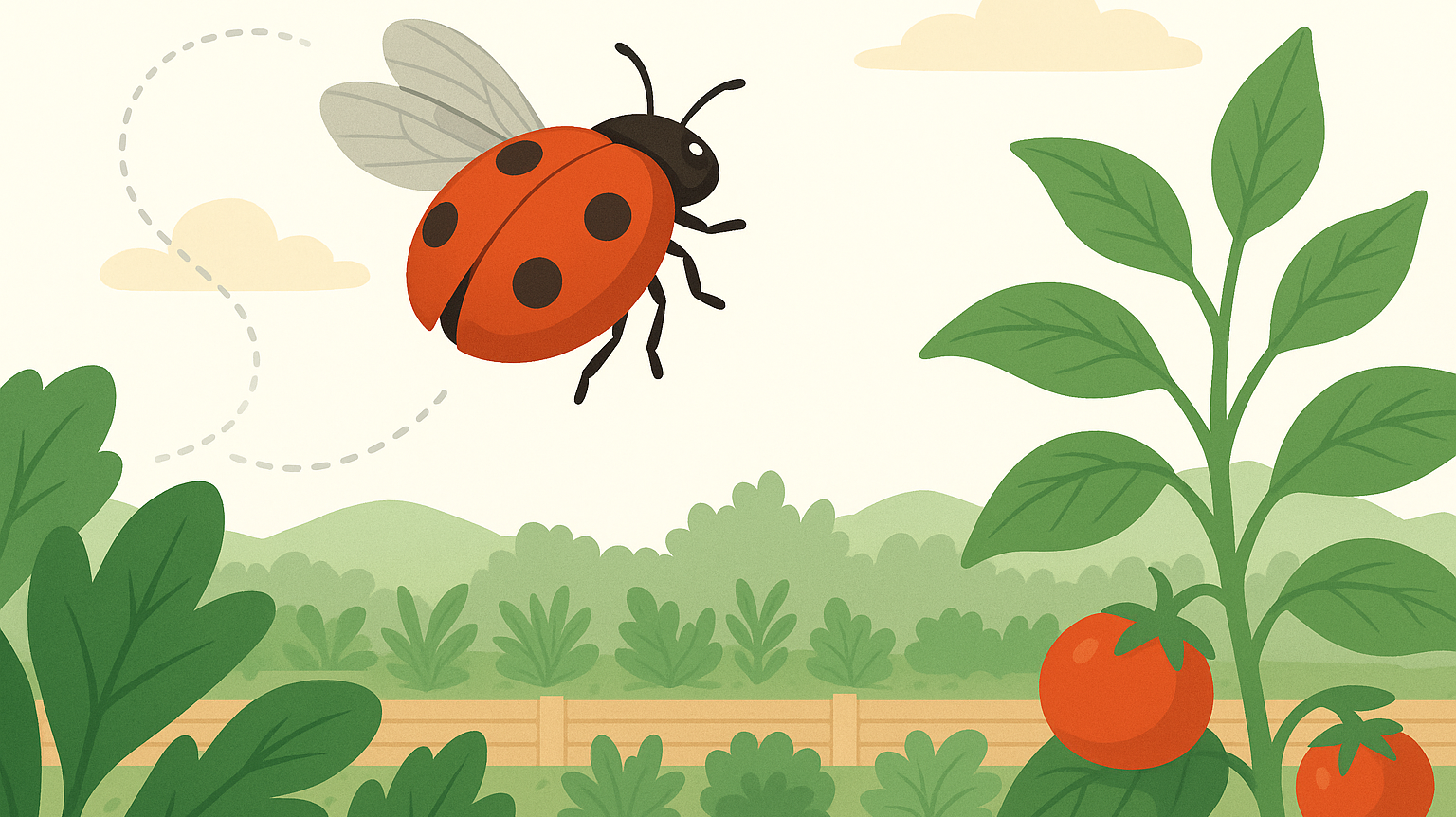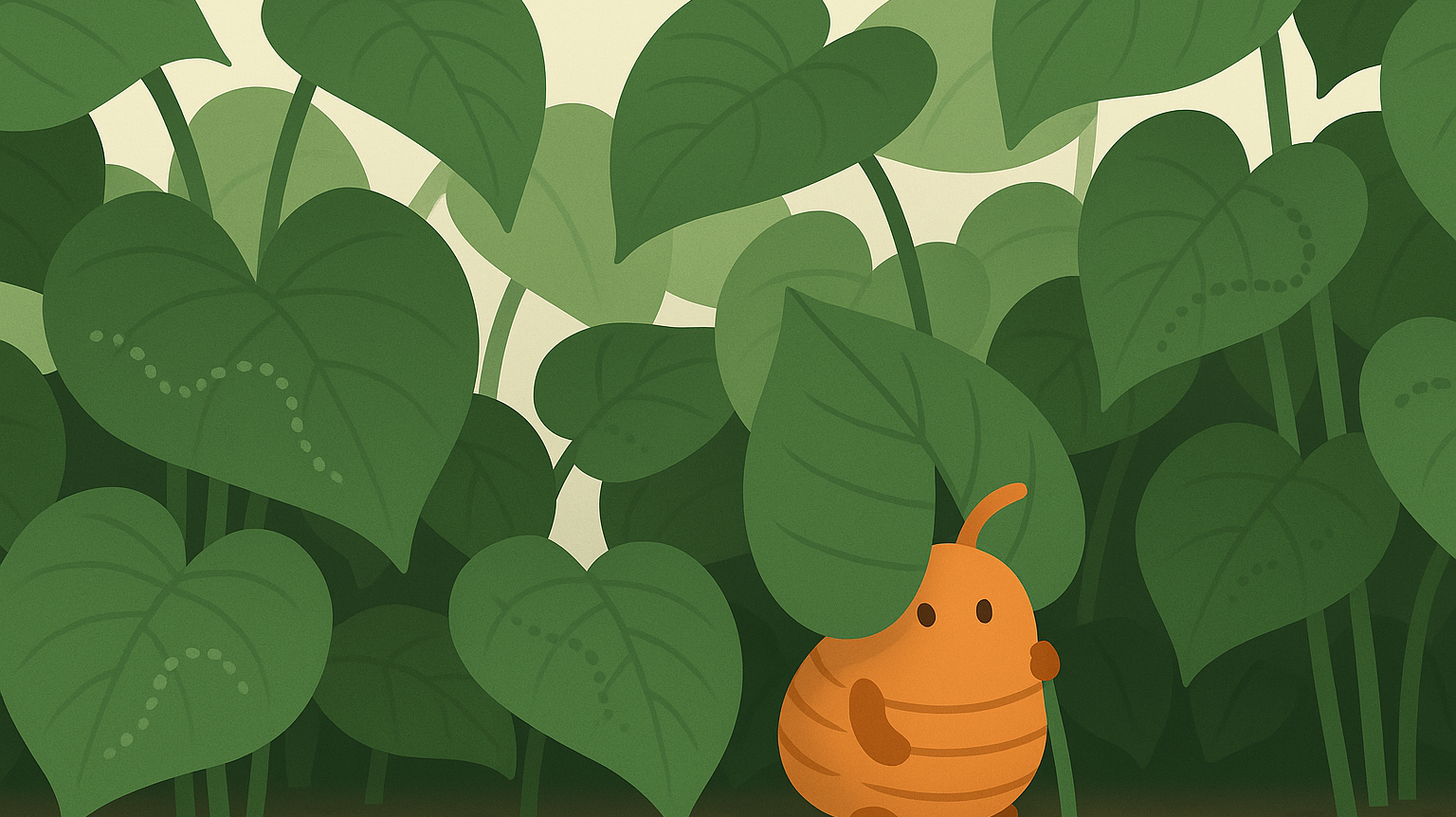Want to Prevent Thrips and Broad Mites From Coming Back?
If you’ve fought off thrips or broad mites before, you already know: they’re microscopic, sneaky, and impossible to spot until the damage is done.
Amblyseius swirskii sachets help make sure it doesn’t get that far again.
Amblyseius swirskii Sachets
Preventative Pest Control for Thrips, Whiteflies, and Microscopic Mites
These slow-release sachets contain all life stages of Swirskii predatory mites—eggs, juveniles, and adults—plus a built-in food source that sustains the population for up to 4 weeks.
As mites exit the sachet, they begin searching your plants for small, soft-bodied pests in the earliest stages—before they cause visible damage.
This is your long-term coverage tool, ideal for growers who want protection between outbreaks.
What It Prevents
| Pest | Targeted Stages |
|---|---|
| Thrips (Frankliniella spp.) | Eggs and larvae |
| Whiteflies (Bemisia, Trialeurodes) | Eggs and larvae |
| Broad mites (Polyphagotarsonemus latus) | All life stages |
| Russet & Tarsonemid mites | All life stages |
Swirskii mites excel in warm, humid setups—greenhouses, grow tents, indoor cabinets, and tropical collections.
Not for Active Infestations
If pests are already visible, sachets won’t act fast enough. Use Swirskii bottles for immediate suppression and layer sachets in after as a follow-up.
Choose Your Brand
| Brand | Best Use Case |
|---|---|
| Tip Top Bio Control | U.S.-produced and field-tested. Excellent for home growers, tents, and greenhouse conditions. Our preferred choice for indoor applications. |
| Koppert “Plus” Sachets | Engineered for consistent mite release in drier or fluctuating climates. A go-to for commercial greenhouses and unstable RH zones. |
Both versions contain the same number of mites and sachets—the difference is in release consistency based on your environment.
How to Use
| Scenario | Application Rate |
|---|---|
| Houseplants or shelves | 1 sachet per plant |
| Dense canopy setups | 1 sachet every 2–3 feet |
| Commercial or greenhouse use | Even distribution across crop lines |
-
Do not open sachets—mites exit through the built-in vent
-
Hang above watering zones—keep dry for full 2–4 week release
-
Replace every 2–4 weeks, depending on climate and pest risk
Best Conditions
| Factor | Ideal Range |
|---|---|
| Temperature | 77–85°F (min. 68°F for activity) |
| Humidity | 60–80% relative humidity |
| Lighting | Works under grow lights or sunlight |
| Airflow | Moderate air movement is fine—avoid direct misting on sachets |
Swirskii perform best in warm, semi-humid spaces. If you're running cooler or drier, consider Andersoni or Californicus.
Pro Tips
-
Add a supplemental food source like Good Bug Diet if you’re deploying into clean, sterile, or post-treatment environments
-
Use Swirskii bottles + sachets together for rapid suppression and ongoing control
-
Avoid foliar sprays or oils before or after release—even “safe” sprays can harm Swirskii
-
Don’t expect to see them. Swirskii are tiny, fast, and often nocturnal
Safe for Everything but the Pests
-
No toxins
-
Zero re-entry interval
-
Pollinator- and pet-safe
-
Compatible with IPM and organic systems
-
No residue, no smell, no damage to foliage
Shipping & Storage
-
Ships 2-Day with live delivery guarantee
-
Use immediately upon arrival
-
If needed, store up to 48 hours at 50°F
-
Do not freeze or store in dry air (avoid household fridges with food)
FAQ
How does the Live Guarantee work?
We know how important it is for your mites to arrive healthy and ready to work. That’s why we offer a live arrival guarantee—with flexible options depending on when we hear from you:
- Let us know within 24 hours of delivery: We’ll gladly send a free replacement shipment.
- Let us know within 2–3 days of delivery: We can offer store credit to make things right.
- After 3 days from delivery: Because these are living organisms, we’re not able to offer replacements or credit beyond that window. By then, it’s harder to know what went wrong or whether shipping conditions were a factor.
We truly want your mites to succeed—so please open your package as soon as it arrives and check on them. If something doesn’t look right, don’t wait—reach out and we’ll take care of you.
Where are you located?
We have a number of different locations in NJ, Maine and Oregon. While we'd love to have you, we are not currently open to the public.
Can I call you?
We get it. Sometimes it's easier to talk to someone, and on a case by case basis we can try to figure it out. Unfortunately though, we're really not able to take calls—FGMN is a small nursery, and we're usually elbows-deep in plants or packing boxes. To make sure nothing gets missed (and everyone gets a timely reply), we keep all communication in writing.
Feel free to message us at info@fgmnnursery.com. We mostly respond quickly, but every once in awhile replies may take a day. Do follow-up if you don't hear in that time. We're human, we miss an email here or there.
Too Many Options?
We get it. Try our mite/insect matchmaking quiz and instantly get matched to the solutions you may need.
Our Live Delivery Guarantee
We stand behind every leaf and every mite. If your plant or predatory insects don’t arrive alive on the first delivery attempt, we’ll make it right.
Here’s what you need to know:
- Email us at info@fgmnnursery.com within 24 hours of delivery
- Include clear photos of the item and the shipping label
- Someone must be available to receive the package—plants and bugs don’t do well sitting in the sun, a mailbox, or the back of a delivery truck
For plants, we offer store credit if something goes wrong.
For predatory mites and beneficial insects, you’ll have the choice of a replacement shipment or store credit.
If you contact us after the 24-hour window, we may still be able to help—just know it’s handled case by case.
We pack with care, insulate when needed, and check the weather before shipping. But once it’s in transit, the fastest way to protect your order is to open it right away.
Mite Matters
The Hidden Weather That Shapes Plant and Predator Life
Invisible weather shapes every growing space. Warm air pools under lights, cool air settles near the floor, and in between, tiny predators decide where they’ll thrive. Learn how microclimates influence the balance between plants, pests, and the mites that keep them in check.
If Ladybugs Are Just Going to Fly Away, Why Use Them?
Most ladybugs don’t fly off out of spite — they leave when the environment isn’t right. Learn how temperature, humidity, and shelter affect whether they settle or scatter, and how to create the ideal setup that keeps them working where you need them most.
Where Did My Predatory Mites Go?
Released predatory mites but can’t see them anymore? Don’t panic. Their invisibility is exactly what makes them effective. Learn why they vanish, how they hunt pests out of sight, and why reapplying keeps your plants protected.







